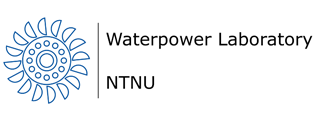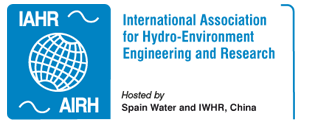Accepted manuscripts - IAHR 2022
Accepted manuscripts
Final formatting requirement
When the manuscript is completely accepted by the reviewers, authors can deliver the final manuscript with correct formatting. Please note that the manuscripts, which are in the category of ‘major revision’ and ‘minor revision’ are not considered as ‘completely accepted.’ IOP Publishing requires to meet formatting guideline absolutely. Any manuscript, which does not meet the formatting guidelines, will be returned by the IOP publisher and the publication of all manuscripts will be halted. This will delay the publication process. We do not have permission to edit/modify any manuscript. Authors themselves are responsible for the final formatting.
Overall guideline for the manuscript
Following contents are borrowed from IOP Science (https://publishingsupport.iopscience.iop.org/author-guidelines-for-conference-proceedings/).
Authors must prepare their papers using Microsoft Word or LaTeX, according to the guidelines and templates, and then convert these files to PDF. It is important to ensure that when you submit your final manuscript, it is in its final form ready for publication, and has been thoroughly proofread. Neither IOP publisher nor organizer copy edit or reformat the papers. We will not send out author proofs prior to publication. Post-publication changes are not possible, so please ensure that your manuscript has been checked for errors. By submitting a paper an author and all co-authors are assumed to agree with the terms of the IOP Proceedings Licence.
- Paper size is A4.
- Margins are 4cm (top), 2.5cm (left and right) and 2.7cm (bottom).
- The paper includes the author name and affiliation (full address including country).
- There are no page numbers, or headers and footers, within the paper.
- The PDF is free of formatting errors (e.g. corrupt equations, missing or low-resolution figures), since conversion from Word to PDF can introduce formatting errors.
- Text is single spaced, do not include line number.
- The PDF file is editable and not password protected.
- All pages are portrait (landscape pages should be rotated).
- Reference lists are checked for accuracy. References can only be linked via Crossref if they are correct and complete. Include DOI for journal articles.
- Figures are placed within the text, not collected at the end of the document.
- A thorough proofread is conducted to check the standard of English and ensure wording is clear and concise.
Download templates
Authors must prepare their papers using our Microsoft Word or LaTeX2e templates, and then convert these to PDF format for submission:
- Microsoft Word templates (zip-file)
- LaTeX2e class file (zip-file)
Multimedia
If you would like to submit multimedia to accompany your paper, you might find these guidelines useful:
Style guide
Acronyms
- Define acronyms at their first occurrence in the abstract and main text. After this, use the acronym only.
- Do not use an acronym if the definition or phrase is used only once.
- The definition should be lower case, unless it contains proper nouns, e.g., electron energy distribution function (EEDF).
- Acronyms that are very familiar to readers of a particular journal do not need to be expanded.
Mathematics
- Punctuate equations (inline and displayed) as part of the sentence.
- Make the following notation roman: differential ‘d’, exponential ‘e’, complex ‘i’, sin, cos, tan, etc.
- Use italic for subscripts and superscripts that are variables and roman for those that are labels.
- Use a full space between numbers and units, e.g., 1 m s−1. Apply the same rule for numbers with mathematical operators, e.g., 1 = x.
- Write units in index notation, e.g., m s−1.
- Do not use hyphens between a number and its unit; use, e.g., 5 m thick barrier (not ‘5-m thick barrier’, or ‘5-m-thick barrier’).
- In numbers, include a thin space every three digits from the decimal, e.g., 15 000.
Footnotes
- Number footnotes sequentially throughout the article. If numbers have been used for affiliations, run on subsequent footnotes in the text (rather than starting again at 1).
- Denote table footnotes with lower case superscript roman letters, e.g. ‘a’, ‘b’, ‘c’, etc, and the list the footnotes underneath the table. Write each new footnote on a separate line.
Miscellaneous
- Use single quotation marks for quotations and double quotation marks for quotations within quotations.
- Use lower case ‘x’ in ‘x-ray’, except at the beginning of a sentence.
- Use a single space after a full stop.
- En dashes (–) can denote a range or relationship between two nouns. Em dashes (—) can be used in place of commas or brackets. Do not use spaces between em dashes or en dashes.
- We encourage authors to use inclusive language (e.g. “they” instead of “he” or “she”) wherever possible.
How to cite an IOP Conference Series paper
The following information is intended to provide an overview of how to cite articles published in the IOP Conference Series titles. Please note that the full publication record for all IOP journals and proceedings can be found in IOPscience.
- All proceedings in IOP Conference Series are published as a single volume of the relevant title. Typically, each volume has just a single issue but very large volumes may be split into two or more issues for ease of reading and navigation.
- Papers published in IOP Conference Series titles use an article numbering system that means that papers should be cited by using the six-digit article number in place of a page number (see examples below).
- Every article has its own unique identifier called a Digital Object Identifier (DOI).
- Articles can be linked via the Crossref system.
- The pages in the PDF file of each article are numbered from 1. These page numbers should not normally be included in a reference. However, if it is desirable to indicate the length of an article, this can be done by including the number of pages, in parentheses, after the article number.
- Please reference and link to the original Version of Record (where it was first published) rather than to other versions of an article and/or a link to a repository or third party database.
- We discourage the referencing of online material hosted at web addresses that have no guarantee of perpetuity. Permanent or persistent web links should be used, as these are intended to remain unchanged for many years into the future, yielding hyperlinks that are less susceptible to ‘link rot’. Examples of acceptable links include: Digital Object Identifier (DOI), PubMed identifier (PMID), PubMed Central reference number (PMCID), SAO/NASA Astrophysics Data System (ADS) Bibliographic Code, and arXiv e-print number.
Examples of citations to conference proceedings including previous IAHR papers from IOP Science
References to conference papers should include:
- Author(s)
- Year of publication
- Title of conference (in italics, initial letter of each significant word should be capital)
Example:
- Mahanta N K and Abramson A R 2012 Thermal conductivity of graphene and graphene oxide nanoplatelets 13th Intersociety Conf. on Thermal and Thermomechanical Phenomena in Electronic Systems
Examples of citations to conference series
- Barry R Holstein 2009 J. Phys.: Conf. Ser. 173 012019
- V V Kramarenko et al 2016 IOP Conf. Ser.: Earth Environ. Sci. 43 012029
- S Adarsh et al 2016 IOP Conf. Ser.: Mater. Sci. Eng. 149 012141
Web links
Only permanent or persistent web links should be used in reference lists. Examples of acceptable links include:
- Digital Object Identifier (DOI)
- PubMed identifier (PMID)
- PubMed Central reference number (PMCID)
- SAO/NASA Astrophysics Data System (ADS) Bibliographic Code
- arXiv e-print number
Unpublished
Pre-prints
References to pre-prints should include:
- Author(s)
- Year of publication
- Pre-print number
- Jones R and Brown A 2011 arXiv:0912.1470
Theses
References to theses should include:
- Author surname and initials
- Year
- Type of thesis
- Institution
- Roberts P 1970 MSc Thesis University of Manchester
- Dobson C T J 1968 Magnetic transport in reaction–diffusion phenomena PhD Thesis Brunel University, London
The title is optional.
Lecture Notes
References to theses should include:
- Author surname and initials
- Year
- Lecture title
- Institution
- Chandrasekhar J R 2003 Modelling aspects of model based dynamic qos management by the performability manager Lecture Notes Institute of Technology Delhi, India
Accepted or submitted
References to articles that are accepted or submitted should include:
- Author(s)
- Year of publication
- Standard abbreviated journal title (in italics)
- Either ‘accepted’ or ‘submitted’
- Jones R and Brown A 2011 Class. Quantum Grav. accepted
In preparation
References to articles that are in preparation should include:
- Author(s)
- Year of preparation
- Article title
- ‘In preparation’ (within parentheses)
- Jones R and Brown A 2011 Class. Quantum Grav. in preparation
Are you using material from other sources?
Sometimes authors use Figures, tables, etc. from other published work. Permissions Note that it is also authors’ responsibility to obtain written permission from the copyright holder for any figures you have reused from elsewhere. This will also include any figures that you created yourself but have previously been published by another publisher, unless that publisher allows you to reuse them without permission under their author rights policy. Check individual publisher’s policies for details. Many scientific, technical and medical publishers use RightsLink to grant permission. Information on how to request permission can usually be found on the website of each publisher. For further information about permissions and when permission is required, please see the Permissions section. Authors do no require to obtain permission for previous IAHR papers published in IOP under CC BY licenses.
Indexing of the manuscripts
Symposium will submit all manuscript, finally accepted by the reviewers and presented in IAHR 2022 Trondheim, to the IOP Publisher EES after the symposium. IOP Publishing provides volume data to the abstracting and indexing providers on publication. However, it is at the discretion of each provider as to how quickly they upload new content.
IOP Conference Series: Earth and Environmental Science (EES)
- Conference Proceedings Citation Index—Science (CPCI-S) (Clarivate, Web of Science)
- CABI
- CNKI
- Ei Compendex
- GEOBASE
- GeoRef
- Inspec
- J-Gate
- JST
- NASA Astrophysics Data System
- Naver Academic
- Scite
- Scopus
- WTI Frankfurt
- Yewno
- OCLC Worldcat
- EX Libris Primo
- EBSCO Discovery Service
- British Library Services
- Google Scholar
- Serial Solutions
- TDNET
- INIS





